Nancy Kelly Allen's Blog, page 10
April 30, 2017
First Draft, part 2
I’m making progress on my manuscript. In fact, the first draft stands on its own in black and white. Or does it? When I wrote The end, which are the two words I always delete prior to submission, Inner Critic decided the ending doesn’t work because it needs some surprise or twist. At this point I don’t have it. That means unless I can devise some clever ending, publication simply is not going to happen. (Inner Critic’s usual negative chatter shouts loud and clear.)
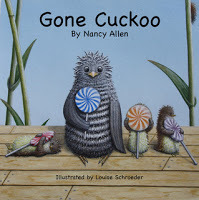 No magic formula exists for writing a manuscript that will capture an editor’s “ear,” but picture books have guidelines. Endings are especially difficult because they have to tie up loose ends and create a satisfying ending. If the reader figures out from the beginning how the ending will unfold, the enchantment of the storytelling is lost. What I need at this moment is a story-ending machine. I feed it my beginning and middle and Kazam! out pops the effective, sustaining ending. Unfortunately, the big box stores don’t carry this product. Outta luck.I’m playing with different endings. Something unexpected that surprises readers, or humors them, or leave them with a warm feeling of contentment, or a cliffhanger, a situation in which the ending is left to the interpretation of the reader. (Thanks, Muse, for these ideas.)Which will it be? By next week, I’ll know (I hope. Shhhhh, Inner Critic!) and fill you in on the process.Call for Submissions for Adult Writers
No magic formula exists for writing a manuscript that will capture an editor’s “ear,” but picture books have guidelines. Endings are especially difficult because they have to tie up loose ends and create a satisfying ending. If the reader figures out from the beginning how the ending will unfold, the enchantment of the storytelling is lost. What I need at this moment is a story-ending machine. I feed it my beginning and middle and Kazam! out pops the effective, sustaining ending. Unfortunately, the big box stores don’t carry this product. Outta luck.I’m playing with different endings. Something unexpected that surprises readers, or humors them, or leave them with a warm feeling of contentment, or a cliffhanger, a situation in which the ending is left to the interpretation of the reader. (Thanks, Muse, for these ideas.)Which will it be? By next week, I’ll know (I hope. Shhhhh, Inner Critic!) and fill you in on the process.Call for Submissions for Adult Writers
Empty Sink Publishing is looking for professional-quality fiction and creative non-fiction submissions that stretch the mind, defy convention, and offer a new perspective on life.
Submission guidelines at http://emptysinkpublishing.com/submissions/
Nancy Kelly Allen has written 40+ children’s books and a cookbook, SPIRIT OF KENTUCKY: BOURBON COOKBOOK. Check out her blog at www.nancykellyallen.com
 No magic formula exists for writing a manuscript that will capture an editor’s “ear,” but picture books have guidelines. Endings are especially difficult because they have to tie up loose ends and create a satisfying ending. If the reader figures out from the beginning how the ending will unfold, the enchantment of the storytelling is lost. What I need at this moment is a story-ending machine. I feed it my beginning and middle and Kazam! out pops the effective, sustaining ending. Unfortunately, the big box stores don’t carry this product. Outta luck.I’m playing with different endings. Something unexpected that surprises readers, or humors them, or leave them with a warm feeling of contentment, or a cliffhanger, a situation in which the ending is left to the interpretation of the reader. (Thanks, Muse, for these ideas.)Which will it be? By next week, I’ll know (I hope. Shhhhh, Inner Critic!) and fill you in on the process.Call for Submissions for Adult Writers
No magic formula exists for writing a manuscript that will capture an editor’s “ear,” but picture books have guidelines. Endings are especially difficult because they have to tie up loose ends and create a satisfying ending. If the reader figures out from the beginning how the ending will unfold, the enchantment of the storytelling is lost. What I need at this moment is a story-ending machine. I feed it my beginning and middle and Kazam! out pops the effective, sustaining ending. Unfortunately, the big box stores don’t carry this product. Outta luck.I’m playing with different endings. Something unexpected that surprises readers, or humors them, or leave them with a warm feeling of contentment, or a cliffhanger, a situation in which the ending is left to the interpretation of the reader. (Thanks, Muse, for these ideas.)Which will it be? By next week, I’ll know (I hope. Shhhhh, Inner Critic!) and fill you in on the process.Call for Submissions for Adult WritersEmpty Sink Publishing is looking for professional-quality fiction and creative non-fiction submissions that stretch the mind, defy convention, and offer a new perspective on life.
Submission guidelines at http://emptysinkpublishing.com/submissions/
Nancy Kelly Allen has written 40+ children’s books and a cookbook, SPIRIT OF KENTUCKY: BOURBON COOKBOOK. Check out her blog at www.nancykellyallen.com
Published on April 30, 2017 05:23
April 23, 2017
The First Draft
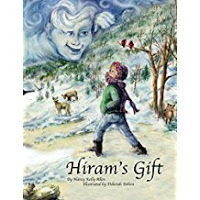 The hardest part of writing, for this writer, is the dreaded first draft. I’m anxious to develop the story that I believe has a ton of possibilities; yet, I know the initial enthusiasm will soon wane from an eagerness to an interest and then, in a turn of directions, to a doubt. Why? Because writing the story is harder, much harder, than visualizing the concept. In my mind, the story plays out in words and images, but transposing the words and images into a rhythmic prose form is a lesson in humility. A series of rewriting is required. Always.
The hardest part of writing, for this writer, is the dreaded first draft. I’m anxious to develop the story that I believe has a ton of possibilities; yet, I know the initial enthusiasm will soon wane from an eagerness to an interest and then, in a turn of directions, to a doubt. Why? Because writing the story is harder, much harder, than visualizing the concept. In my mind, the story plays out in words and images, but transposing the words and images into a rhythmic prose form is a lesson in humility. A series of rewriting is required. Always. I’ve just finished my first draft, and I’m pleased. It’s perfect. The first draft is perfect because it’s written. That means I’ve reached my first goal with this story. The fact that my first draft is terribly written is something I accept. First drafts are supposed to be terrible, and since mine is definitely in that category, it’s perfect. That’s a warped sense of judgment, but it works for me.
I sit here with a first draft that demands a ton of work. My muse murmurs: The story will improve with figurative language. My inner critic, ever the naysayer, whispers: The only figuring for this story is to wad it. Two points if you hit the round file.
Muse and Inner Critic battle.
Time to turn them off and just write.
Next week, I’ll have more on my first draft experience and those two polar opposites, Muse and Inner Critic.
Call for Submissions for Young Writers:
Teen Ink has no staff writers; we depend completely on YOU to send writing, art and photos. There is no charge to submit or be published and anything you submit will be considered for Teen Ink'smagazine, book series and website.
Submission guidelines athttp://www.teenink.com/Submissions/guidelines.php
Call for Submissions for Adult Writers:
Timeless Tales exclusively publishes retellings of fairy tales and myths. We only accept submissions that are retellings of the fairytale or myth listed as our theme. We don't accept original fairy tales or stories outside of our current theme.
Deadline: May 5
Submission guidelines at http://www.timelesstalesmagazine.com/...
Nancy Kelly Allen has written 40+ children’s books and a cookbook, SPIRIT OF KENTUCKY: BOURBON COOKBOOK. Check out her blog at www.nancykellyallen.com
Published on April 23, 2017 06:07
April 16, 2017
How Long Does It Take to Write a Picture Book?
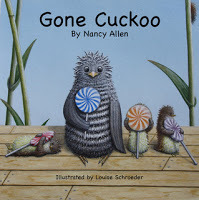 The number one question I’m asked about writing: How long does it take to write a picture book?
The number one question I’m asked about writing: How long does it take to write a picture book? Of all the writing questions I’m asked, that one is the hardest to answer. In a measurement of time, do I include the conceptual preparation, that phase when I consider countless obstacles the character can encounter? Or do I begin with the first time I place pen to paper or fingers to keyboard? From the origin of the idea to the first written word of the manuscript may consume weeks, maybe months. The character lingers, like the sweet aroma of a cake baking, in the oven of my mind. As the idea jells (or curdles), I sometimes write notes on the character, plot, and single phrases; I sometimes let them hang out and tantalize my senses, with scenes etching into my brain before I begin stringing words on paper.
I’ve been keeping notes on one particular character that has been marching around my thinker for a few weeks. Today, I took action and began writing the manuscript. So is this day one or day fifty-seven?
After rewriting the first draft, a second, a third…at some point, whenever it is fairly polished, I’ll send it to my critique partner. I’ll polish again and place it aside for a month or so. During that time, I’ll think about it occasionally, cognitively making changes, as I work on another manuscript. Do I count those days?
I don’t keep track of my time; however, some authors do. They log their time on each project and can answer the question posed here in actual days/hours/minutes. I’m not that time-task oriented. My mind tends to wander off track too often to keep a time log; instead, I have to admit: I don’t know the answer. But this I know: The time it takes to write a picture book varies with every book and every author.
Call for Submissions for Young Writers:
Canvas Teen Literary Journal was established and 2013 and publishes quarterly in print, ebook, web, video, and audio formats. It is seeking work by writers aged 13 to 19 and accepts fiction, novel excerpts, poetry, plays, nonfiction, new media and experimental cross-genre work. Canvas asks that all submissions be previously unpublished but it will make exceptions for work that was published in a school literary journal or a personal website.
Submission guidelines at http://canvasliteraryjournal.com/submit/
Call for Submissions for Adult Writers:
GIRLWORKS: The “magazine for smart girls” aged 11-15 years. Focus on all issues facing girls. Articles: 400-800 words.
Submission guidelines at https://www.google.com/?gws_rd=ssl#q=girlworks+magazine+submissions
Nancy Kelly Allen has written 40+ children’s books and a cookbook, SPIRIT OF KENTUCKY: BOURBON COOKBOOK. Check out her blog at www.nancykellyallen.com
Published on April 16, 2017 06:49
April 9, 2017
Query Letter How-To, Part 2
See: Previous blog for paragraph one.
In paragraph two of a query letter, I explain why I selected this publisher or editor. Maybe they have published similar type books or the editor mentioned in an interview that she was looking for a particular type of book. (I read several interviews before I send to an editor, so I can mention something that lets her/him know that I didn’t just submit without researching.) I also mention how the book might work in the marketplace or that readers who enjoy a particular book or series of books, comparable titles, would also enjoy this manuscript.
[image error] In the third paragraph, I add my bio, that which is relevant to writing. Since I am a retired teacher/librarian, I always state this. If you have publication credits, list those. If you have no books published, but you’ve won an award or certificate for writing, mention it. When writing nonfiction, explain why you are qualified on that subject. At this point, state that you have other manuscripts available, if you have them.
The query letter is your introduction to the editor. Keep it short, one page. Thank the editor and sign your name. I also include my website, blog, and phone number below my name.
Check, double check, triple check the letter to eliminate grammatical errors.
Call for Submissions for Young Writers:
BRASS: Young adults. Focus is on making money matters interesting and relevant to young adults. Prefers contributors from 16-29 years old. You must register with Brass to get information on submitting. http://www.brassmagazine.com/contribute
Submission guidelines at http://www.brassmagazine.com/contribute
Call for Submissions for Adult Writers:
Chicken Soup. Being happy is a state of mind. We can all find happiness in our lives and, even though we may have to look for it, we know that each day brings something to be grateful for. We want to hear your stories about finding your path to contentment. These success stories can be serious or funny and should inspire our readers to focus on hope, strength and optimism. How did you think positive and find happiness? Was it something as simple as an attitude adjustment? Did you make a major change in the handling of your daily life? How did you find purpose, passion and joy in your life and how do you stay positive? How do you use gratitude to be happier? The deadline date for story and poem submissions is May 31, 2017.
Submission guidelines at http://www.chickensoup.com/story-subm...
Nancy Kelly Allen has written 40+ children’s books and a cookbook, SPIRIT OF KENTUCKY: BOURBON COOKBOOK. Check out her blog at www.nancykellyallen.com
In paragraph two of a query letter, I explain why I selected this publisher or editor. Maybe they have published similar type books or the editor mentioned in an interview that she was looking for a particular type of book. (I read several interviews before I send to an editor, so I can mention something that lets her/him know that I didn’t just submit without researching.) I also mention how the book might work in the marketplace or that readers who enjoy a particular book or series of books, comparable titles, would also enjoy this manuscript.
[image error] In the third paragraph, I add my bio, that which is relevant to writing. Since I am a retired teacher/librarian, I always state this. If you have publication credits, list those. If you have no books published, but you’ve won an award or certificate for writing, mention it. When writing nonfiction, explain why you are qualified on that subject. At this point, state that you have other manuscripts available, if you have them.
The query letter is your introduction to the editor. Keep it short, one page. Thank the editor and sign your name. I also include my website, blog, and phone number below my name.
Check, double check, triple check the letter to eliminate grammatical errors.
Call for Submissions for Young Writers:
BRASS: Young adults. Focus is on making money matters interesting and relevant to young adults. Prefers contributors from 16-29 years old. You must register with Brass to get information on submitting. http://www.brassmagazine.com/contribute
Submission guidelines at http://www.brassmagazine.com/contribute
Call for Submissions for Adult Writers:
Chicken Soup. Being happy is a state of mind. We can all find happiness in our lives and, even though we may have to look for it, we know that each day brings something to be grateful for. We want to hear your stories about finding your path to contentment. These success stories can be serious or funny and should inspire our readers to focus on hope, strength and optimism. How did you think positive and find happiness? Was it something as simple as an attitude adjustment? Did you make a major change in the handling of your daily life? How did you find purpose, passion and joy in your life and how do you stay positive? How do you use gratitude to be happier? The deadline date for story and poem submissions is May 31, 2017.
Submission guidelines at http://www.chickensoup.com/story-subm...
Nancy Kelly Allen has written 40+ children’s books and a cookbook, SPIRIT OF KENTUCKY: BOURBON COOKBOOK. Check out her blog at www.nancykellyallen.com
Published on April 09, 2017 04:58
April 2, 2017
Query Letter How-To
A writer asked me to discuss the how-to process of a query letter, so here’s my take on it:
First and foremost, always check the publisher’s website to determine if unsolicited manuscripts and/or query letters are accepted. If not, keep looking for a publisher that accepts queries.My query letters begin with the date, followed by the greeting. Send to a particular editor (e.g. Dear Ms. Smith) unless the publisher requests a different format, such as an online form, which has become quite common.
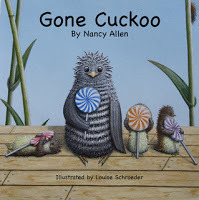 I divide my query letter into three paragraphs. The first paragraph begins with a hook. Keep it short, a mere sentence or two. A query letter than landed me a contract for GONE CUCKOO began: Adoption isn’t just for children. In the animal kingdom, cuckoo birds find foster parents to raise their young. Within this first paragraph, I give a short synopsis of the book, capturing the plot and theme of the story, but don’t usually reveal the ending. (Again, check the publisher’s submission guidelines. Some want to know the ending.) State the title of the book, target audience, word count, and genre.
I divide my query letter into three paragraphs. The first paragraph begins with a hook. Keep it short, a mere sentence or two. A query letter than landed me a contract for GONE CUCKOO began: Adoption isn’t just for children. In the animal kingdom, cuckoo birds find foster parents to raise their young. Within this first paragraph, I give a short synopsis of the book, capturing the plot and theme of the story, but don’t usually reveal the ending. (Again, check the publisher’s submission guidelines. Some want to know the ending.) State the title of the book, target audience, word count, and genre.
Describe your book so the editor will want to read the manuscript. Check out the flap copy or back copy of books in libraries and bookstores to see how books are described.
Next week, I’ll further discuss the how-to of writing a query.
Call for Submissions for Young Writers
BLAZE MAGAZINE: Ages 8-14. Focus is on horse-related entertainment and education. We get lots and lots of mail! Some are great stories written by our readers. To showcase their talent we’ve started a new department. Send us your short horse story or poem and maybe you’ll be published here too!
Submission guidelines at http://blazekids.com/category/shortstories/
Call for Submissions for Adult Writers
CICADA is a YA lit/comics magazine fascinated with the lyric and strange and committed to work that speaks to teens’ truths. We publish poetry, realistic and genre fic, essay, and comics by adults and teens. (We are also inordinately fond of Viking jokes.) Our readers are smart and curious; submissions are invited but not required to engage young adult themes. CICADA does not distribute theme lists for upcoming issues.
Submission guidelines at http://www.cicadamag.com/node/110
Nancy Kelly Allen has written 40+ children’s books and a cookbook, SPIRIT OF KENTUCKY: BOURBON COOKBOOK. Check out her website at www.nancykellyallen.com
First and foremost, always check the publisher’s website to determine if unsolicited manuscripts and/or query letters are accepted. If not, keep looking for a publisher that accepts queries.My query letters begin with the date, followed by the greeting. Send to a particular editor (e.g. Dear Ms. Smith) unless the publisher requests a different format, such as an online form, which has become quite common.
 I divide my query letter into three paragraphs. The first paragraph begins with a hook. Keep it short, a mere sentence or two. A query letter than landed me a contract for GONE CUCKOO began: Adoption isn’t just for children. In the animal kingdom, cuckoo birds find foster parents to raise their young. Within this first paragraph, I give a short synopsis of the book, capturing the plot and theme of the story, but don’t usually reveal the ending. (Again, check the publisher’s submission guidelines. Some want to know the ending.) State the title of the book, target audience, word count, and genre.
I divide my query letter into three paragraphs. The first paragraph begins with a hook. Keep it short, a mere sentence or two. A query letter than landed me a contract for GONE CUCKOO began: Adoption isn’t just for children. In the animal kingdom, cuckoo birds find foster parents to raise their young. Within this first paragraph, I give a short synopsis of the book, capturing the plot and theme of the story, but don’t usually reveal the ending. (Again, check the publisher’s submission guidelines. Some want to know the ending.) State the title of the book, target audience, word count, and genre. Describe your book so the editor will want to read the manuscript. Check out the flap copy or back copy of books in libraries and bookstores to see how books are described.
Next week, I’ll further discuss the how-to of writing a query.
Call for Submissions for Young Writers
BLAZE MAGAZINE: Ages 8-14. Focus is on horse-related entertainment and education. We get lots and lots of mail! Some are great stories written by our readers. To showcase their talent we’ve started a new department. Send us your short horse story or poem and maybe you’ll be published here too!
Submission guidelines at http://blazekids.com/category/shortstories/
Call for Submissions for Adult Writers
CICADA is a YA lit/comics magazine fascinated with the lyric and strange and committed to work that speaks to teens’ truths. We publish poetry, realistic and genre fic, essay, and comics by adults and teens. (We are also inordinately fond of Viking jokes.) Our readers are smart and curious; submissions are invited but not required to engage young adult themes. CICADA does not distribute theme lists for upcoming issues.
Submission guidelines at http://www.cicadamag.com/node/110
Nancy Kelly Allen has written 40+ children’s books and a cookbook, SPIRIT OF KENTUCKY: BOURBON COOKBOOK. Check out her website at www.nancykellyallen.com
Published on April 02, 2017 03:37
March 26, 2017
How to Stay Motivated, part 2
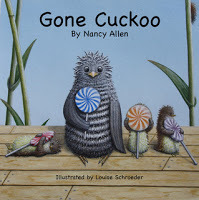
The number one way to stay motivated is to fine positivity in writing. For some, that means satisfying feedback from critiques, a compliment from someone who has read your work, or the ultimate: a contract that leads to seeing your work in print.
My critique partner, the awesome Sandi Underwood, and I are in the fortunate positions of completing revisions for books that will be published next year. Along with editorial notes are the myriad emotions that accompany the task at hand: elation (I’m beyond thrilled.); doubt (Can I actually rewrite this manuscript on a professional level?); fear (What if I fail? I’ve already told people the book is in production.); confidence (Yes, I can. Yes, I will!); and more too numerous to list, plus completing the revision with a deadline looming. Underlying the mixed emotions is this powerful drive called motivation (deadlines will give even the most reluctant writer a huge dose of get-up-and-go).
Sandi and I work together on our manuscripts all the time, but each of us working at the same time on final revisions for forthcoming books is uncharted territory. The big positive here is that we’re more excited than ever. She’s helping me. I’m helping her (I hope).
Positive moments in a writer’s life create motivation, a yearning to push a little harder, a little farther down the path to publication.
Nancy Kelly Allen has written 40+ children’s books and a cookbook, SPIRIT OF KENTUCKY: BOURBON COOKBOOK. Check out her blog at www.nancykellyallen.com
Call for Submissions for Young Writers:
One Teen Story publishes 4 stories a year and accepts submissions from teen writers ages 13-19.
Submissions are now open. What kind of stories is One Teen Storylooking for?
One Teen Story is looking for great short stories written by teens about the teen experience. We seek stories that deal with issues of identity, friendship, family, and coming-of-age. Gratuitous profanity, sex and drug use are best avoided. We’re open to all genres of well-written young adult fiction between 2,000 and 4,500 words. Because of our format, we can only accept stories that are strong enough to stand alone (as opposed to excerpts from novels-in-progress). Proof of the author’s age will be required for all stories accepted for publication.
Submission guidelines at http://www.one-story.com/index.php?page=submit&pubcode=ots
Call for submissions for Adult Writers:
ASK: Ages 6-9. Nonfiction magazine with a focus on science and the world. Each edition centers around a specific theme. Focus on engaging nonfiction, not dry text. Humor, unusual questions. and unexpected connections are encouraged. All articles are commissioned. Query first with resume and writing samples. Feature articles: 900-1600 words. Humor pieces: 200-400 words. http://www.cricketmag.com/19-Submission-Guidelines-for-ASK-magazine-for-children-ages-6-9
Submission guidelines at https://www.google.com/?gws_rd=ssl#q=...
Published on March 26, 2017 07:01
March 19, 2017
How to Stay Motivated
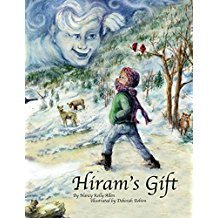
This week I received a request to blog about how I stay motivated after 28 years in the business of writing for children. Sometimes, I can easily answer with quips such as, I have so many ideas rattling around in my head, I need to push some out of there or The process has become a habit so I don’t know what I would do if I didn’t write. Both answers are true; however, what I’m not saying in my answer is that there are days when I write very little for a number of reasons: I don’t feel like writing, I’m giving myself a break following a long revision of a manuscript, or I simply don’t want to. Period.
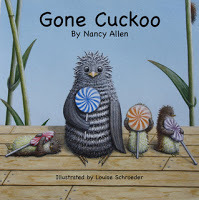
The don’t-want-to-write attitude doesn’t last long, seldom more than a day or two. Even on the no-write days, I’m usually thinking about a new character or how I can approach a subject in a fun way to introduce facts or a fictional account to young readers. Writing every day doesn’t necessarily mean taking pen to paper. Writers need time to let a story perk cognitively before beginning a manuscript. Some people call this daydreaming. I prefer the word strategizing. Writing a manuscript is a solitary venture. Butt-in-chair is required for long periods of time—days, weeks, months, whatever it takes. The excitement and energy exhibited in the beginning stages of writing the story often evolves into feelings of doubt with a double dose of I’m incompetent by the time we hit the middle of the tale. Excitement tarnishes, energy fades along with interest, and sometimes I abandon the manuscript. Has this every happened to you?So what’s the pick-me-up? Next week, part 2. Call for Submissions for Young Writers:Parallel Ink. This is an e-magazine that publishes writing by students for students around the world aged 12-18.
Submission guidelines at http://parallelink.tumblr.com/submitwork
Call for Submissions for Adult Writers:New Moon. Portrays girls and women as powerful, active, and in charge of their own lives – not as passive beings who are acted upon by others. Celebrates girls and their accomplishments and supports girls’ efforts to hold onto their voices, strengths, and dreams as they move from being girls to becoming women. Female contributors only. All material should be pro-girl and focus on girls, women, or female issues. Edited by and for girls ages 8 to 14. Fiction: 900 to 1,200 words, stories in which the main character is a girl ages 8 to 14.
Submission guidelines at http://newmoon.com/how-to-get-publish...
Nancy Kelly Allen has written 40+ children’s books and a cookbook, SPIRIT OF KENTUCKY: BOURBON COOKBOOK. Check out her blog at www.nancykellyallen.com
Published on March 19, 2017 04:05
March 12, 2017
How to Create Memorable Characters in Picture Books, Part 5
A relatable character connects with the reader.
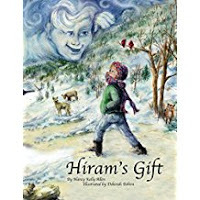 In HIRAM’S GIFT, I wanted to create a humble, caring, good-natured, hard-working character—easier said than done in the short text of a picture book. So I structured the book over a period of several years to showcase the Christmas gifts Hiram received as opposed to what he had hoped to receive. His reactions SHOWed his emotions and humbled nature, which works better than me TELLing them. He hoped for a fiddle but received a harmonica. He by-passed disappointment and embraced the idea of learning to play a harmonica with joy. I try to custom build my characters to fit my story world and never base a fiction character on a particular person. If I use real people as a basis, the character is an amalgamation of several.
In HIRAM’S GIFT, I wanted to create a humble, caring, good-natured, hard-working character—easier said than done in the short text of a picture book. So I structured the book over a period of several years to showcase the Christmas gifts Hiram received as opposed to what he had hoped to receive. His reactions SHOWed his emotions and humbled nature, which works better than me TELLing them. He hoped for a fiddle but received a harmonica. He by-passed disappointment and embraced the idea of learning to play a harmonica with joy. I try to custom build my characters to fit my story world and never base a fiction character on a particular person. If I use real people as a basis, the character is an amalgamation of several.
My goal is to hang a suitable name on the protagonist that fits the story and the time. Page or Armor are more appropriate names for the pet of a knight than Fluffy. Also, use a name the audience can easily read. "Pfogmoregetti" might fit the character, but the difficulty of pronouncing it forces the reader to stop and focus on the name, rather than the action.
Characters give life to the story. Take time to know the character prior to writing. Focus on his/her uniqueness: hobbies, habits, fears, hopes, goal, temperament, vocal expressions, gestures, etc. A memorable character lives on in the minds of the readers after the book is finished.
Call for Submissions for Young and Adult Writers:Pearl S Buck Short Story Writing Contest! § Send your original and unpublished manuscript to The Pearl S. Buck Writing Center by April 15, 2017.§ There are categories for children, teens and adults, and a winner in each will be awarded a $100 prize!§ Grades 3-6 word count not to exceed 1000 words§ Grade 7-12 word count not to exceed 1000 words§ Adult word count not to exceed 2,500 words§ This contest is open to everyone.§ The winners will be announced at the 125th birthday celebration of Pearl S. Buck on June 26, 2017.Submission guidelines at
https://psbwritingcenter.org/2017/01/...
Nancy Kelly Allen has written 40+ children’s books and a cookbook, SPIRIT OF KENTUCKY: BOURBON COOKBOOK. Check out her blog at www.nancykellyallen.com
 In HIRAM’S GIFT, I wanted to create a humble, caring, good-natured, hard-working character—easier said than done in the short text of a picture book. So I structured the book over a period of several years to showcase the Christmas gifts Hiram received as opposed to what he had hoped to receive. His reactions SHOWed his emotions and humbled nature, which works better than me TELLing them. He hoped for a fiddle but received a harmonica. He by-passed disappointment and embraced the idea of learning to play a harmonica with joy. I try to custom build my characters to fit my story world and never base a fiction character on a particular person. If I use real people as a basis, the character is an amalgamation of several.
In HIRAM’S GIFT, I wanted to create a humble, caring, good-natured, hard-working character—easier said than done in the short text of a picture book. So I structured the book over a period of several years to showcase the Christmas gifts Hiram received as opposed to what he had hoped to receive. His reactions SHOWed his emotions and humbled nature, which works better than me TELLing them. He hoped for a fiddle but received a harmonica. He by-passed disappointment and embraced the idea of learning to play a harmonica with joy. I try to custom build my characters to fit my story world and never base a fiction character on a particular person. If I use real people as a basis, the character is an amalgamation of several. My goal is to hang a suitable name on the protagonist that fits the story and the time. Page or Armor are more appropriate names for the pet of a knight than Fluffy. Also, use a name the audience can easily read. "Pfogmoregetti" might fit the character, but the difficulty of pronouncing it forces the reader to stop and focus on the name, rather than the action.
Characters give life to the story. Take time to know the character prior to writing. Focus on his/her uniqueness: hobbies, habits, fears, hopes, goal, temperament, vocal expressions, gestures, etc. A memorable character lives on in the minds of the readers after the book is finished.
Call for Submissions for Young and Adult Writers:Pearl S Buck Short Story Writing Contest! § Send your original and unpublished manuscript to The Pearl S. Buck Writing Center by April 15, 2017.§ There are categories for children, teens and adults, and a winner in each will be awarded a $100 prize!§ Grades 3-6 word count not to exceed 1000 words§ Grade 7-12 word count not to exceed 1000 words§ Adult word count not to exceed 2,500 words§ This contest is open to everyone.§ The winners will be announced at the 125th birthday celebration of Pearl S. Buck on June 26, 2017.Submission guidelines at
https://psbwritingcenter.org/2017/01/...
Nancy Kelly Allen has written 40+ children’s books and a cookbook, SPIRIT OF KENTUCKY: BOURBON COOKBOOK. Check out her blog at www.nancykellyallen.com
Published on March 12, 2017 07:05
March 5, 2017
How to Create Memorable Characters in Picture Books, Part 5
Memorable characters are those that seem real to the reader. Try these tips to bring out the “real” in your characters.
Give specific details in a character’s development. Maybe he loves pancakes and wants pancakes every meal or she wants to wear only polka dots.
What are the character’s physical attributes? A character can be unusually built: extremely tall or short for the age group. How can these traits benefit or hinder the character? In many picture books these are depicted in the illustrations. But if the physical traits impact the problem the character is facing, they should be revealed in the text.
Verbal traits also distinguish the characters. A lisp due to missing front teeth works for a young child. Some kids use catch phrases. Listen to kids talking. “Awesome,” “like,” and “very” are words frequently used.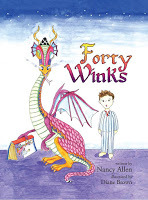 A character’s special interests should mirror those of the audience at a particular age. Does the character love to ride a bicycle or swim? The little boy in FORTY WINKS loved to read a book that he thought was magical. When the monster living in the closet would not share the book, the boy faced a dilemma: confront the monster or never read the book. What did it take to make the character react the way he did? Motivation + emotions = reactions. Figure out what motivates the character, add a dose of emotions, and let the story evolve. I am never concerned if my book is more appropriate for a boy or a girl. My preference is to allow the reader to decide what s/he wants to read.Next week, I’ll discuss more ways of creating memorable characters. Call for Submissions for Young Writers:
A character’s special interests should mirror those of the audience at a particular age. Does the character love to ride a bicycle or swim? The little boy in FORTY WINKS loved to read a book that he thought was magical. When the monster living in the closet would not share the book, the boy faced a dilemma: confront the monster or never read the book. What did it take to make the character react the way he did? Motivation + emotions = reactions. Figure out what motivates the character, add a dose of emotions, and let the story evolve. I am never concerned if my book is more appropriate for a boy or a girl. My preference is to allow the reader to decide what s/he wants to read.Next week, I’ll discuss more ways of creating memorable characters. Call for Submissions for Young Writers:
Young Writers Magazine. We actively seek the work of extremely talented teenage writers. Browse the site and see for yourself.
Submission guidelines at http://www.youngwritersmagazine.com/submission-guidelines/
Call for Submissions for Adult Writers:
Ashland Creek Press is currently accepting submissions of book-length fiction and nonfiction on the themes of the environment, animal protection, ecology, and wildlife — above all, we’re looking for exceptional, well-written, engaging stories.
We are open to many genres (young adult, mystery, literary fiction) as long as the stories are relevant to the themes listed above. Submission guidelines at http://ashlandcreekpress.com/about/su...
Nancy Kelly Allen has written 40+ children’s books and a cookbook, SPIRIT OF KENTUCKY: BOURBON COOKBOOK. Check out her blog at www.nancykellyallen.com
Give specific details in a character’s development. Maybe he loves pancakes and wants pancakes every meal or she wants to wear only polka dots.
What are the character’s physical attributes? A character can be unusually built: extremely tall or short for the age group. How can these traits benefit or hinder the character? In many picture books these are depicted in the illustrations. But if the physical traits impact the problem the character is facing, they should be revealed in the text.
Verbal traits also distinguish the characters. A lisp due to missing front teeth works for a young child. Some kids use catch phrases. Listen to kids talking. “Awesome,” “like,” and “very” are words frequently used.
 A character’s special interests should mirror those of the audience at a particular age. Does the character love to ride a bicycle or swim? The little boy in FORTY WINKS loved to read a book that he thought was magical. When the monster living in the closet would not share the book, the boy faced a dilemma: confront the monster or never read the book. What did it take to make the character react the way he did? Motivation + emotions = reactions. Figure out what motivates the character, add a dose of emotions, and let the story evolve. I am never concerned if my book is more appropriate for a boy or a girl. My preference is to allow the reader to decide what s/he wants to read.Next week, I’ll discuss more ways of creating memorable characters. Call for Submissions for Young Writers:
A character’s special interests should mirror those of the audience at a particular age. Does the character love to ride a bicycle or swim? The little boy in FORTY WINKS loved to read a book that he thought was magical. When the monster living in the closet would not share the book, the boy faced a dilemma: confront the monster or never read the book. What did it take to make the character react the way he did? Motivation + emotions = reactions. Figure out what motivates the character, add a dose of emotions, and let the story evolve. I am never concerned if my book is more appropriate for a boy or a girl. My preference is to allow the reader to decide what s/he wants to read.Next week, I’ll discuss more ways of creating memorable characters. Call for Submissions for Young Writers: Young Writers Magazine. We actively seek the work of extremely talented teenage writers. Browse the site and see for yourself.
Submission guidelines at http://www.youngwritersmagazine.com/submission-guidelines/
Call for Submissions for Adult Writers:
Ashland Creek Press is currently accepting submissions of book-length fiction and nonfiction on the themes of the environment, animal protection, ecology, and wildlife — above all, we’re looking for exceptional, well-written, engaging stories.
We are open to many genres (young adult, mystery, literary fiction) as long as the stories are relevant to the themes listed above. Submission guidelines at http://ashlandcreekpress.com/about/su...
Nancy Kelly Allen has written 40+ children’s books and a cookbook, SPIRIT OF KENTUCKY: BOURBON COOKBOOK. Check out her blog at www.nancykellyallen.com
Published on March 05, 2017 03:54
February 26, 2017
How to Create Memorable Characters in Picture Books, Part 3
To develop a memorable character, get to know him/her/it before writing. In picture books, the
writer needs to know the character’s motivation and how the character reacts to situations.
A compelling character needs a problem to make his/her life interesting enough to carry the reader’s interest throughout the story. The problem should be large enough to create consequences that can ripple from beginning to end. As the character attempts to control the situation, allow the reader to “see” his/her feelings. Emotions give life to a character and affect actions and reactions. Maybe anger compels him to act in a way he normally would not. Strong emotions can force characters to react to circumstances even when they don’t want to.
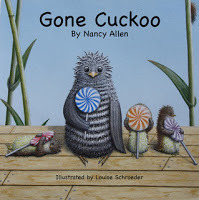 When I wrote GONE CUCKOO, I wanted to portray the birth parents (cuckoos) as warm, caring birds, and do the same for the warblers (adoptive parents). The main character is a young cuckoo bird that doesn’t fit into the lifestyle of the warblers, and when he attends Warbler Academy, he fails miserably. Naturally, his frustration and embarrassment levels are high and he feels as if he is a failure.
When I wrote GONE CUCKOO, I wanted to portray the birth parents (cuckoos) as warm, caring birds, and do the same for the warblers (adoptive parents). The main character is a young cuckoo bird that doesn’t fit into the lifestyle of the warblers, and when he attends Warbler Academy, he fails miserably. Naturally, his frustration and embarrassment levels are high and he feels as if he is a failure.
Even though the characters are birds, their emotions and behaviors mirror that of children who are placed in a similar, unfamiliar situations in which they are ill-suited. As a result, the characters become relatable.
Call for Submissions for Young Writers
Sarah Mook Poetry Prize for Students. Restrictions: Students in grades K-12. Genre: Poetry. Prize: $100.
Deadline: March 31, 2017.
Submission guidelines at http://www.sarahmookpoetrycontest.com/
Call for Submissions for Adult Writers
Positively Happy! Chicken Soup for the Soul. 101 Stories about Positive Thinking and Living a Happy Life
Deadline: May 31, 2017
Submission guidelines at https://www.freedomwithwriting.com/freedom/uncategorized/chicken-soup-for-the-soul-several-deadlines-approaching-11-books/
Nancy Kelly Allen has written 40+ children’s books and a cookbook, SPIRIT OF KENTUCKY: BOURBON COOKBOOK.
writer needs to know the character’s motivation and how the character reacts to situations.
A compelling character needs a problem to make his/her life interesting enough to carry the reader’s interest throughout the story. The problem should be large enough to create consequences that can ripple from beginning to end. As the character attempts to control the situation, allow the reader to “see” his/her feelings. Emotions give life to a character and affect actions and reactions. Maybe anger compels him to act in a way he normally would not. Strong emotions can force characters to react to circumstances even when they don’t want to.
 When I wrote GONE CUCKOO, I wanted to portray the birth parents (cuckoos) as warm, caring birds, and do the same for the warblers (adoptive parents). The main character is a young cuckoo bird that doesn’t fit into the lifestyle of the warblers, and when he attends Warbler Academy, he fails miserably. Naturally, his frustration and embarrassment levels are high and he feels as if he is a failure.
When I wrote GONE CUCKOO, I wanted to portray the birth parents (cuckoos) as warm, caring birds, and do the same for the warblers (adoptive parents). The main character is a young cuckoo bird that doesn’t fit into the lifestyle of the warblers, and when he attends Warbler Academy, he fails miserably. Naturally, his frustration and embarrassment levels are high and he feels as if he is a failure. Even though the characters are birds, their emotions and behaviors mirror that of children who are placed in a similar, unfamiliar situations in which they are ill-suited. As a result, the characters become relatable.
Call for Submissions for Young Writers
Sarah Mook Poetry Prize for Students. Restrictions: Students in grades K-12. Genre: Poetry. Prize: $100.
Deadline: March 31, 2017.
Submission guidelines at http://www.sarahmookpoetrycontest.com/
Call for Submissions for Adult Writers
Positively Happy! Chicken Soup for the Soul. 101 Stories about Positive Thinking and Living a Happy Life
Deadline: May 31, 2017
Submission guidelines at https://www.freedomwithwriting.com/freedom/uncategorized/chicken-soup-for-the-soul-several-deadlines-approaching-11-books/
Nancy Kelly Allen has written 40+ children’s books and a cookbook, SPIRIT OF KENTUCKY: BOURBON COOKBOOK.
Published on February 26, 2017 05:25



